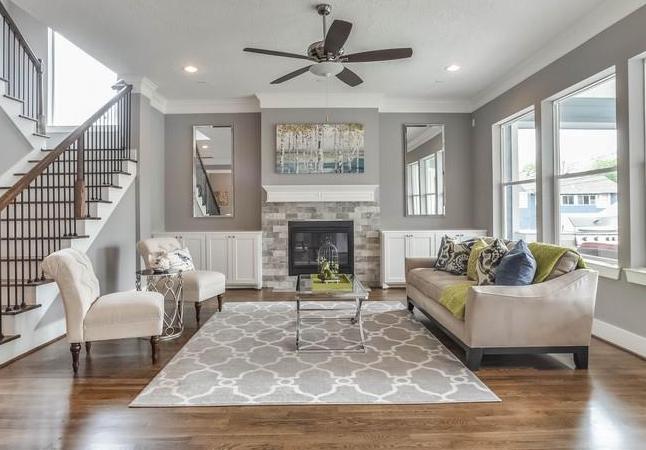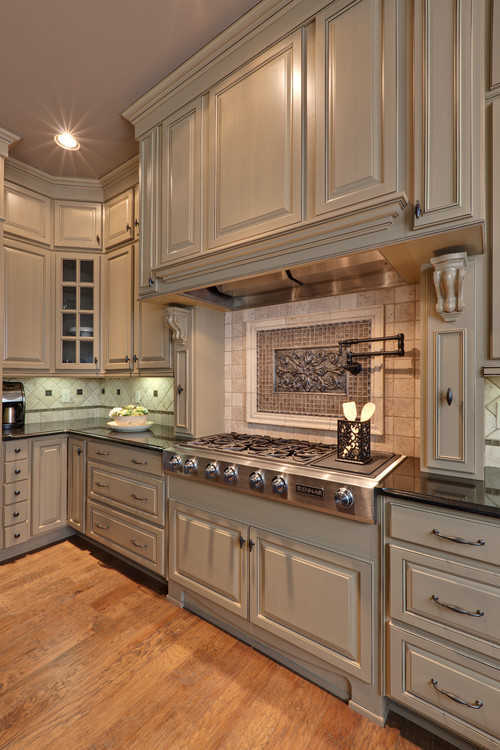How to infuse gray and beige. Inspiration rooms!

Redesign Etc. Home Staging: A full-service home staging business since 2006, offers a wide variety of staging services for unoccupied and occupied homes. We have successfully staged and consulted on over 100 million dollars worth of property in and around the Houston/Bay area. Our company has a proven track record and uses current staging techniques to target market your area, showing potential buyers a "lifestyle." In 2017 our staged properties averaged 24 hours to 14 D.O.M.
8/10/11
How to Pick The Right Color of Gray and Beige...Greige!
How to pick the right color of gray and beige...Greige! Grey can be a tuff color to work with, it can come across as cold and sterile. Typically used for contemporary or modern looks it has made it's presence into mainstream design. If properly done, it can evoke a very classic and relaxing feel. Beige can be a great way to highlight gray paint and color. Blending gray and beige makes for a beautiful warm and calming atmosphere. Both can be used for home staging and neutral decorating with a beautiful outcome.
How to infuse gray and beige. Inspiration rooms!
How to infuse gray and beige. Inspiration rooms!
8/9/11
Working with Deer Heads and Horns When Staging & Decorating is it a Battle of the Sexes?
Working in the Houston Texas area, I see quite a few deer heads, horns and exotic animals. The hunters I've met have quite a passion for their trophies on the wall.
I've learned to incorporate then into their homes when decorating, especially for move-in decorating and they look fantastic.
When it comes to home staging, I've found that they can be used tastefully and subtly to enhance a room, more so with the horns vs. the entire head.
I don't want to sterilize a home when staging, but leave some personality in it while still making it neutral and appealing to potential home buyers.
Some nice examples below:
8/5/11
How Home Staging Works - What Is Home Staging?

Alvis Upitis/Photographers Choice/Getty Images
The cardinal rule of home staging? Clean, clean, clean.
If you're selling a home these days, in most parts of the country, just putting up a for sale sign and hoping for the best probably won't be enough. In a sluggish real-estate market, homeowners sometimes have to take extra steps to make a sale. For sellers trying to make a good impression, home staging has become a popular way to increase a home's selling price and decrease selling time.
Home staging is arranging furniture and decor with the intent to showcase a home for sale. It could cost you nothing -- a simple cleaning and the removal of day-to-day living items can sometimes be all you need. But it can also involve some financial investment -- like painting, improving the landscaping and adding furniture and plants to give potential buyers an idea of what their new home would look like.
So where do you start? Should you hire someone to stage your home for you, or can you do it yourself? If you want to hire someone, where do you look? If you do it yourself, what do you need to know? Do staged homes actually sell faster and for more money? We'll answer all of those questions as we explore how home staging works.However, staging isn't decorating, according to real-estate professionals. It's more like depersonalizing a home so that prospective buyers can imagine themselves in it. This can mean removing family photos, piles of newspapers and the cat's litter box, as well as adding neutral-colored paint and carpet and buying new appliances.
by Tiffany Connors from "How Stuff Works"
8/4/11
How Home Staging Works - Home Staging Tips
How Home Staging Works
Home Staging Tips

Rosanne Olson/Digital Vision/Getty Images
Clear appliances off kitchen counters -- you want to sell counter space, not clutter.
There are easy, affordable ways to spruce up the inside of your home. The general advice is this:
Clean, clean, clean. This is the most important rule of staging a home. And cleaning doesn't just mean vacuuming the carpet and scrubbing the bathroom (although that's important, too). It includes cleaning under the countertops, replacing shower curtains, cleaning the grout between tiles, steam-cleaning the carpets, dusting the crown molding and ceiling fans, washing the windows (inside and out), polishing all fixtures and wiping down all appliances (inside and out). There should be no sign of dirt anywhere, and sometimes homeowners miss spots because they forget that some places even exist -- for instance, windowsills and closet interiors. Using a professional cleaning service might be a wise investment.
Sell the space, not the stuff. You're going to have to clear out your things so buyers don't have to look past your family photos to see your home. To prevent potential buyers from getting distracted, you should remove all memorabilia. Some stagers even recommend removing mirrors so buyers don't get sidetracked by seeing themselves. However, others say that mirrors can make a room appear larger, so it can depend on the home. And clearing the kitchen counters of appliances allows you to sell the counter space instead of the appliances. After all this purging, you could be left with empty walls, so many home stagers will find cheap art outside -- it can be as simple as gathering leaves and enclosing them in simple frames. Most stagers also recommend depersonalizing bathrooms by replacing personal hygiene items with plants or pottery.
You should also arrange furniture so it's easy for potential buyers to navigate a room. Typically, this involves removing furniture (another good reason to rent storage space), but also pay attention to the room as a whole -- if there's too much furniture or decor on one side, it can feel lopsided. And whatever you do use to decorate, group them in objects of three at varying heights to make them pleasing to the eye but not distracting or cluttering.
Let there be light. If a room is clean (and it should be), let the buyers see it. Most pros recommend maximizing natural light by opening curtains and shades -- some even suggest removing all window dressings, as long as there aren't obvious holes and nails in the wall when they're taken down. If weather permits, open windows let in fresh air, an added bonus because it removes your scent, which can further distract buyers. Also, turn on all the lights in the house to make rooms appear brighter and bigger.
by Tiffany Connors from "How Stuff Works"
Subscribe to:
Posts (Atom)
